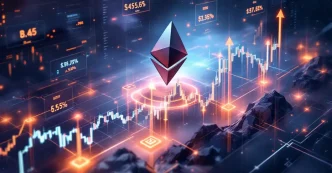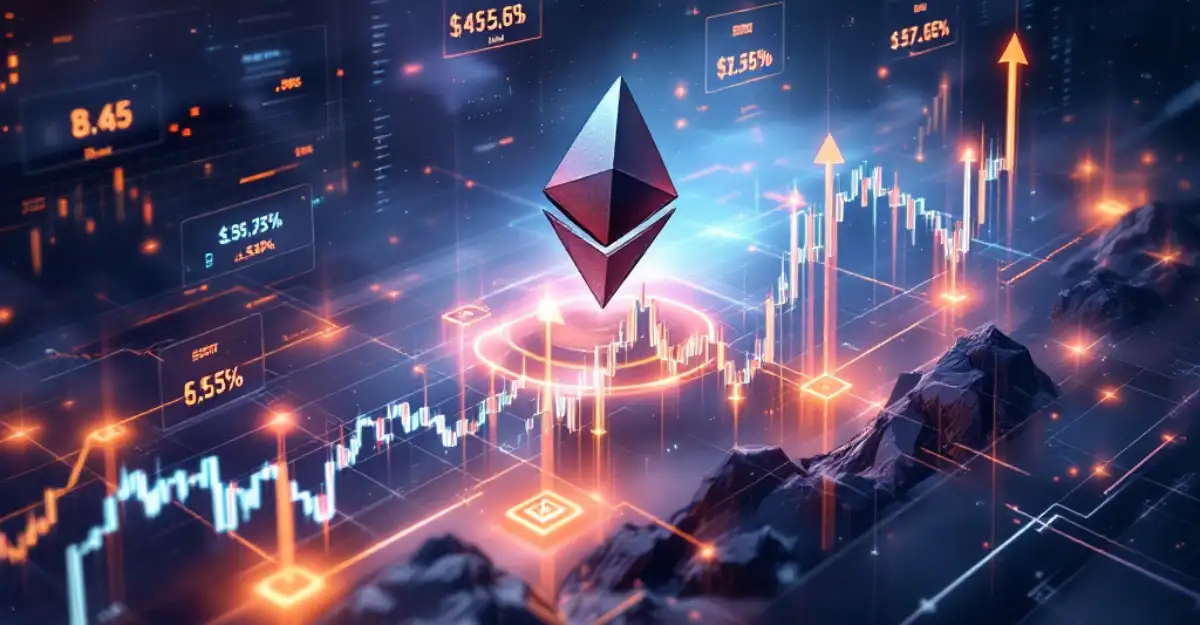Ethereum, the world’s pre-eminent smart-contract blockchain, is poised for a transformative leap. A proposal to halve the time it takes to create new blocks could turbocharge transactions, supercharge decentralised finance, and solidify its global dominance. But with great speed comes great risk, and by 2026, Ethereum’s developers must navigate a minefield of technical and economic challenges to deliver on this ambitious vision.
A Blueprint for Speed
On 21 June 2025, Ethereum core developer Barnabé Monnot unveiled Ethereum Improvement Proposal (EIP) 7782, a plan to slash the network’s slot time—the interval between new blocks—from 12 seconds to six. First drafted in October 2024, the proposal is slated for the Glamsterdam update in late 2026. “Shorter slot times make the confirmation service better” said Monnot, arguing that faster blocks could enhance Ethereum’s economic value as a settlement layer. The plan adjusts subslot timings: block proposals drop from four seconds to three, while attestation and aggregation times each fall from four seconds to 1.5, doubling block frequency.
The Ethereum Foundation’s June 2025 roadmap, published on its official site, outlines Glamsterdam’s broader goals: tripling gas limits to handle more transactions and expanding data capacity eightfold via increased blob supply. These upgrades are critical, as faster blocks could strain the network without robust scaling. X posts from @VitalikButerin reflect developer optimism, with some calling EIP-7782 a “pivotal step” toward outpacing rivals like Solana, which boasts sub-second transaction times. Yet, the Binance Square article from 24 June 2025 warns that implementation requires meticulous testing to avoid disrupting Ethereum’s $70bn ecosystem.
DeFi’s Golden Opportunity
EIP-7782 could reshape Ethereum’s sprawling decentralised finance (DeFi) sector, which holds $70bn in assets as of June 2025, according to Bloomberg. Faster block times would accelerate transaction confirmations, refreshing wallet balances and decentralised applications (DApps) in near-real time. Decentralised exchanges like Uniswap would benefit from quicker price updates, narrowing arbitrage opportunities that cost traders millions annually. “Faster slots lead to more liquidity” said Monnot, forecasting lower trading fees and more efficient markets. Layer-2 networks like Optimism, which settle on Ethereum, would gain smoother operations, enhancing user experiences globally.
In DeFi hubs like Singapore and Dubai, where blockchain adoption is surging, the upgrade could entrench Ethereum’s lead. A June 2025 Financial Times report notes Singapore’s push to regulate DeFi, and faster blocks could ease compliance by reducing transaction censorship risks, as validators propose blocks twice as often. X posts from @DeFiPulse capture trader excitement, with users anticipating “buttery-smooth” trading bots and retail interfaces. In India, where DeFi startups raised $500m in 2024 per Reuters, quicker confirmations could spur innovation, aligning with the country’s digital economy ambitions.
Technical Tightrope
Speeding up Ethereum is not without peril. Validators, the nodes that secure the network, face tighter timing constraints. Those in emerging markets like Nigeria or Indonesia, often using slower hardware or patchy internet, could struggle, risking penalties or network centralisation—a concern echoed in X posts by @EthereumDev. More frequent consensus messages demand higher bandwidth, potentially clogging the network during DeFi booms. The Binance article highlights smart contract risks, noting that Ethereum’s $70bn DeFi ecosystem relies on their stability. A glitch could trigger cascading failures, as seen in past blockchain outages.
Monnot acknowledges these hurdles, emphasizing Glamsterdam’s gas optimisations to mitigate congestion. Reuters reported in June 2025 that developers are planning extensive simulations, drawing on the 2022 Merge’s success, which slashed energy use by 99.9%. Still, claims of lower fees or seamless DApps remain speculative until tested at scale. The Financial Times notes that institutional players like Goldman Sachs, which joined Ethereum’s Enterprise Alliance in 2025, are watching closely, wary of instability that could dent confidence.
A Global Stakes Race
Ethereum’s speed gambit is a bid to outrun rivals like Solana and Polygon, which offer faster transactions but lack Ethereum’s DeFi depth. If Glamsterdam delivers, Ethereum could cement its role as the global DeFi hub by 2027, drawing developers from London to Bangalore. A June 2025 World Bank report highlights Brazil’s surging DeFi adoption, where faster blocks could fuel growth. But failure to balance speed and stability could erode trust, especially in the U.S., where institutional adoption is accelerating, per Bloomberg. Regulatory scrutiny in the EU, flagged by the Financial Times, adds pressure to ensure censorship resistance. By late 2026, Ethereum’s ability to execute this high-wire act will determine whether it remains the backbone of the decentralised future.















